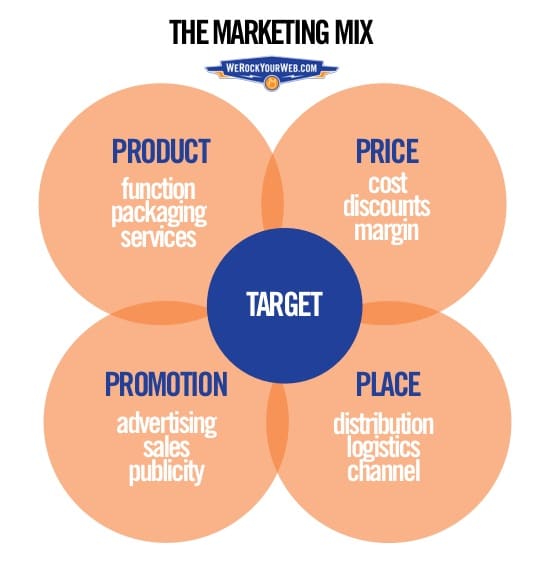A high-quality marketing strategy requires a lot of thought and development. Before a brand can dive into all the subcategories of marketing, such as digital marketing, email marketing, and so on, their marketing team needs to have a solid understanding of basic marketing concepts, including the 4 Ps of marketing.
What are the 4 Ps of marketing?
The 4 Ps of marketing were first popularized in the 1950s by Neil Borden and helped marketing teams to account for the physical barriers that tended to prevent widespread product adoption.
The easiest way to think of the 4 Ps of Marketing is like a chain, where each P links to the next.
While there have been many varying Ps of marketing that have been developed throughout the years, the basics have remained the same.
Source: Business2Community
1. Product
The first of our 4 Ps is the product. Your brand has developed a product or service that solves a problem or need of a consumer. This is your starting point.
2. Price
The second of our 4 Ps is the price, otherwise known as the monetary value of the product or service that the consumer will pay. This P is based not only on the fair monetary value of the item/service, but must also consider the overall supply costs, what prices other brands are selling it at, and more.
3. Place
The overall goal of any marketing effort is to get consumers to see your product, so your team must know where they’ll be selling the product. Will it be online? In a physical store? Alternatively, does your service come to the consumer?
The “place” can also refer to where the product’s being marketed, such as through email, on social media, on a website, and more.
4. Promotion
The final P is the promotion of your product or service. The promotion is how your product/service is presented to the public and the marketing strategy behind it.
How to measure the success of this marketing concept
When it comes to measuring the success of this marketing concept in your email campaigns, we look at the 4 Ps a little differently.
- Promise – Start your email by making a short, punchy promise to the readers to entice them to open up your email and see what your deal or offer is all about.
- Paint – Once they’ve opened the email, you want to paint them a picture of what their life would be like after you’ve delivered your promise to them.
- Proof – This is where you provide the proof that your product or offer is all that you made it out to be. This can be done through social proof, such as testimonials.
- Push – You’ve gotten the readers excited about your product or offer, now it’s time to push them to act.
Measuring the success of the 4 Ps in email marketing
Now that we’ve applied the 4 Ps framework to our emails, we can use our KPIs to help guide us in determining how effective this method works with our brand’s campaigns. You’ll want to monitor the following KPIs carefully:
- Open rate
- Click-through rate
- Deliverability rate
- Spam rate
- Bounce rate
Seeing an increase in the first three KPIs will indicate more success, while seeing an increase in the last two will indicate unhappy readers.
Do the 4 Ps of marketing really matter?
The Ps in marketing all revolve around the same three extensions: people, process, and physical evidence. This is why the Promise/Paint/Proof/Push framework works so well for marketing emails.
So, while the 4 Ps of marketing may take on various names, the basic idea remains the same, so knowing these basics is vital to any marketing strategy.
What now?
The 4 Ps are one way to approach your marketing strategy, but they’re not the only way. Why not consider looking at it through a psychological lens?
Check out our piece on the 4 principles of psychology that can help boost your customer referrals.
